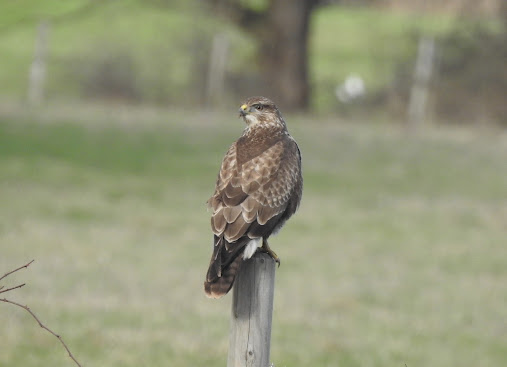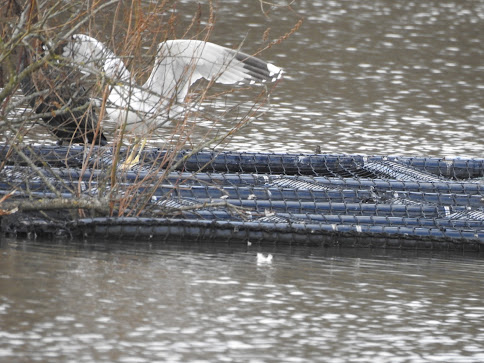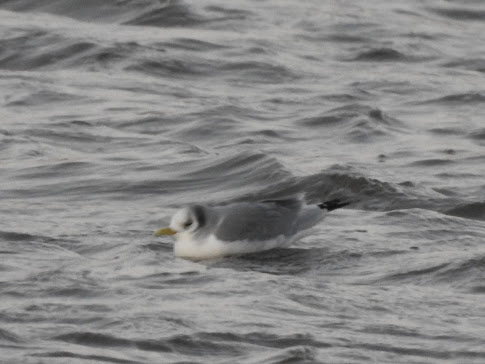As I intend to visit every part of the 10km Circle around my house, you sometimes get days when the prospects look grim but you go anyway. Today was one of those.
I started off at Green Lane near the hospital and headed toward the Arrow at Washford Mill. The footpath took me across a featureless field of pasture and on to one with tufts of sedge springing out of it. The first field was the one with birds in it; 23 Redwings, a Fieldfare, and a Pied Wagtail. The hedgerow abounded with Goldfinches and eight Greenfinches. All this avian mediocrity came to the notice of a Sparrowhawk which glided silently at speed across the field about six inches off the grass before bursting through an open gateway. Surprise! Birds scattered in panic and the Sparrowhawk eventually flew to the dense branches of an Oak tree where I tried to photograph it. When it finally decided to move again, it whizzed around the tree in an attempt to catch a single Blue Tit which it had obviously had its eye on. The tit escaped.
As a seasoned birder I need to remember that even a dull day can be lit up by an encounter like this.
I headed back to the lane and then on to Studley where I eventually found the Arrow again. The older houses along Castle Road have a healthy population of House Sparrows, and it is telling that many modern estates lack them completely.
Having established that the river was home to about a dozen Mallard, and the riverside contained more Goldfinches and a single Siskin I headed north along the river, now firmly in Warwickshire, without seeing very much else.
Well, there was this I suppose.
 |
| Common Buzzard |











.jpeg)
















%20larseniella%20-%201st%20for%20site.jpeg)














